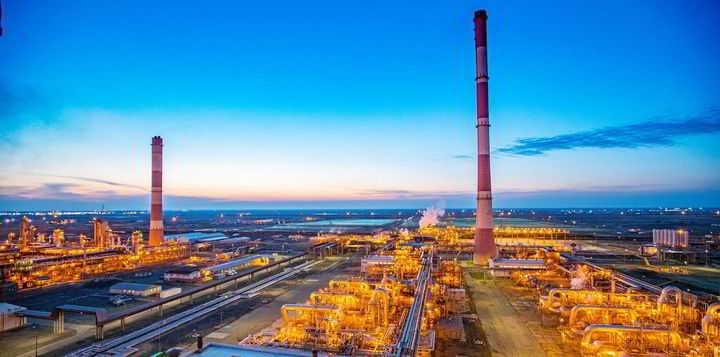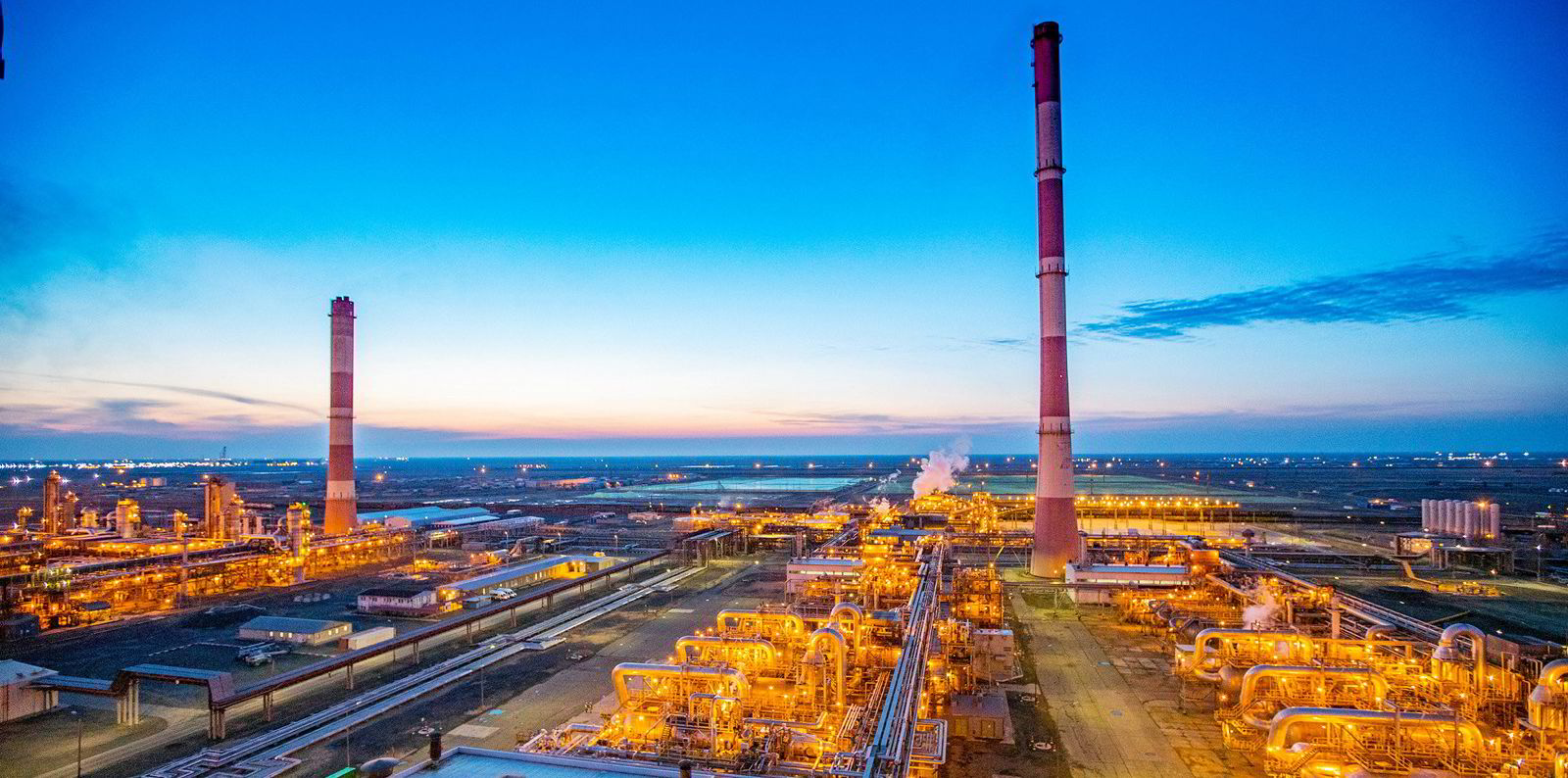US supermajor Chevron has started bringing online newly built facilities that form part of the multibillion-dollar production capacity expansion project at the Tengiz oilfield — the largest producing oilfield in Kazakhstan.
A sour gas injection facility is now in the early commissioning stage and within the next few days the fuel gas system is scheduled to be tied in to the first gas turbine generator, Chevron general manager Roderick Green said during the company’s fourth quarter 2022 earnings call.
Green described the latest development as “an important milestone” for the expansion of the Tengiz field, which Chevron operates through the the Tengizchevroil joint venture in which Kazakh state company KazMunayGaz, US supermajor ExxonMobil and LukArco, owned by Russian company Lukoil, are shareholders.
The expansion includes construction of facilities under the Wellhead Pressure Management Project (WPMP) and Future Growth Project (FGP).
The WPMP will enable the existing facilities to continue production at their full capacity by lowering flowing wellhead pressures, while the FGP involves the deployment of powerful sour gas injection compressors and injection wells to pump excess produced associated gas into the Tengiz reservoir and support its pressure.
Next in line is the commissioning of pressure boost compressors in the third quarter and then the conversion of the Tengiz field’s operations from “high to low pressure”.
Article continues below the advert
However, oil production is expected to decline slightly in the second half of 2023 as this conversion moves forward, Chevron warned.
Turnarounds are scheduled for the second half of this year for two of the five existing legacy processing trains at Tengiz, Green said.
Production may not fuly recover on some of these trains as they return to service, as some of the wells will not resume flowing until the operator switches the field to the low pressure system, he added.
However, as the development moves into 2024, Chevron expects to complete these high-to-low pressure conversions and also see the FGP facilities starting up in the first half of 2024.
The full effect of the two projects will “show in 2025”, with full planned growth in production realised in 2026, according to Green.
High cashflow
Chevron expects Tengiz to remain highly profitable, even in this transitioning year, with anticipated dividends to the US supermajor of between $5 billion and $6 billion in 2023, higher than in 2022, on an assumed average Brent price of $60 per barrel, according to Chevron chief financial officer Pierre Breber.
Tengizchevroil sells almost all of its crude on international markets via the Caspian Pipeline, a dedicated export pipeline running from the Kazakh city of Atyrau to offshore loading terminal near the Russian port of Novorossiysk on the Black Sea.
Industry analysts warned last year that the pipeline route and Tengizchevroil remain vulnerable to potential Russian retaliation against international sanctions introduced by the US and European nations last year in response to Russia’s invasion in Ukraine in February 2022.
Price caps on Russian seaborne oil cargoes were also introduced in December, with similar caps on exports of oil products set to be enacted on 5 February.
“We’ve been investing in this [expansion] project for six-plus years through Covid and other ups and downs,” Breber said.
“When it starts up, it will generate a lot of free cash flow. We’ll see that in the form of dividends and we’ll see that in the form of paying back some of the loans that Chevron co-lent to Tengizchevroil.”
According to the company, Tengiz is expected to bring a five-fold increase in free cash flow in 2026 and onwards, against 2021.
Tengizchevroil is the largest oil producer in Kazakhstan and last year accounted for about 610,000 barrels per day of oil per, almost 40% of the country’s total oil output.
According to Kazakh energy industry networking channel, Energy Monitor, the venture is also a largest taxpayer in Kazakhstan, paying over 3.8 trillion tenge ($8 billion) in corporate income tax, oil export levies and royalty taxes to the Kazakh government in 2022.

